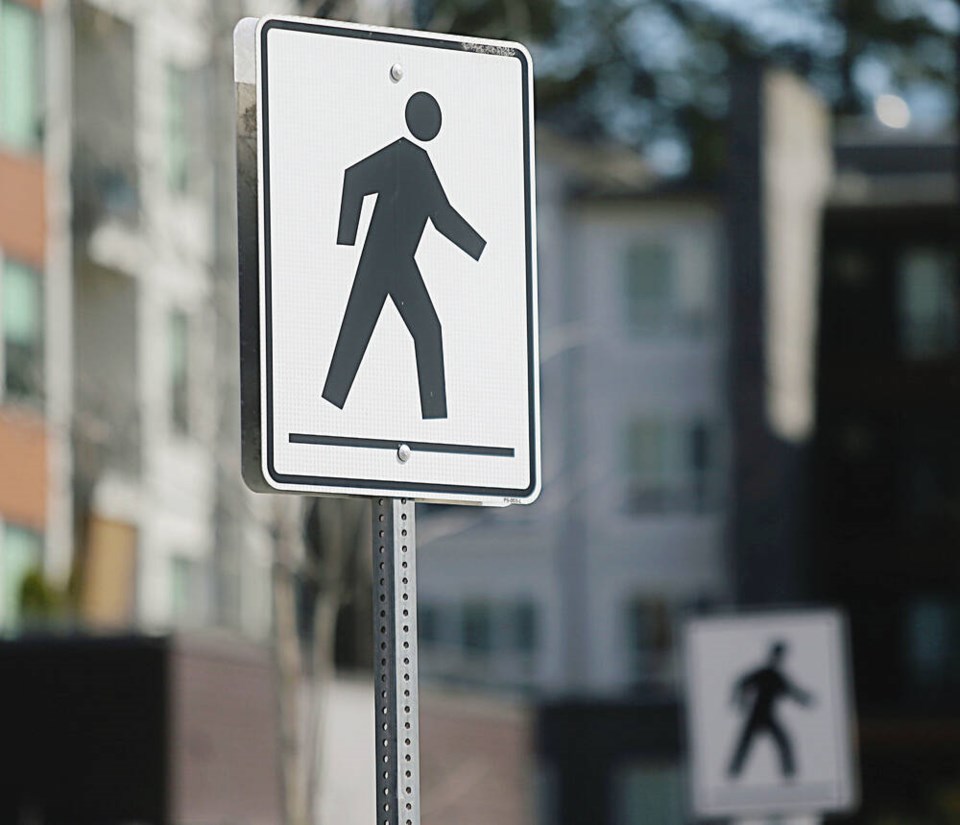The fall season is now with us. That means early evening darkness, soon compounded by our return to standard time. That also means it’s the start of the most dangerous time of year for pedestrians.
According to research by UBC, in B.C. 1 out 5 injury collisions involve a vehicle hitting a pedestrian. That works out to over 2,000 mishaps every year resulting in 2,300 pedestrian injuries and more than 50 deaths every year in this province. Most of these collisions occur between 3 and 6 p.m. during weekdays.
However, if you are a nightowl, you’re in even more jeopardy as a pedestrian. That’s because late-night collisions, the ones that happen between midnight and 6 a.m., have double the fatality rate compared to ones happening earlier in the day.
Mowing down pedestrians is an equal opportunity exercise according to UBC, meaning that the numbers of pedestrians struck are roughly the same for females and males.
Males take the lead however when it comes to pedestrian fatalities — around 55%.
None of this paints a pretty picture, so it’s worth looking at where and how pedestrian collisions occur.
Not surprisingly they occur at the greatest point of pedestrian and vehicle conflict — the intersection.
Around 25% of the time, vehicles are most likely to strike a pedestrian when the vehicle is making a left turn at an intersection, while the pedestrian has the right of way, with a signal and is in a crosswalk.
Vehicles making a right turn at an intersection strike pedestrians in the crosswalk, with the right of way, around 17% of the time.
Pedestrian collisions that happen in the middle of a block, where there is no signal or pedestrians who are jaywalking, account for around 11% of collisions.
The UBC study, which looked at these issues by examining a score of other statistical reports, also found two interesting trends around pedestrian behaviour.
Pedestrian distraction is increasingly becoming a factor in vehicle collisions. A pedestrian who texts or surfs the web has a 3.9 times greater risk of exhibiting risky behaviours such as not looking right or left when they cross the street.
I can attest to that one. I make a mental bet with myself when I see a pedestrian crossing in front of me. If they don’t turn their heads to look at cars heading right for them, they are either on their phone or are wearing earbuds. I don’t often lose that bet.
Another factor I see playing out too often with pedestrians is also confirmed by the UBC study: Pedestrians who enter a crosswalk, even when properly obeying a walk signal, are 2.8 times less likely to actually look side to side for approaching vehicles.
I call this one the “force-field effect”: “Because I’m in a crosswalk, I don’t have to look. I have supernatural protection from being struck by a car.”
The UBC study also backs up one of my biggest pet peeves — the pedestrian countdown clock. To me they’re bad news. Almost no one obeys the orange hand saying “Don’t Walk.” All eyes are on the countdown.
The study showed that countdown signals have an uncertain but contributory effect towards pedestrian/motor vehicle crashes. UBC found a 26% increase in the rate of pedestrian collisions following the installation of pedestrian countdown signals. Crosswalks without countdown signals have experienced a 1.36% reduction in pedestrian injuries.
Drivers also bear their share of blame in striking pedestrians. For them the leading causes in these types of collisions are distraction, weather and simply failing to yield the right of way.
With the hours of darkness growing larger every day now there is a much greater need for drivers to remain focused on the road, particularly when turning at intersections.
It may seem like I’m laying too much blame on pedestrians for this problem. I’m not. As I’ve said before, no matter who’s at fault in a pedestrian collision, the pedestrian is always the loser. Pedestrians who remain alert to the road environment are better able to react to danger.
While walking, you can stop in one or two steps. A vehicle might require 10 to 20 metres to do the same thing and that’s providing the driver is paying attention.
As a pedestrian, never assume you have the right of way. Look right and left and make eye contact with the driver.
Many pedestrians are struck when a vehicle in one lane stops but the car in the next lane does not. Never pass that first stopped vehicle until you’re sure the lane next to it is clear, or the car in it has stopped.
Wear bright or reflective clothing at night. Ninjas get run over.
Stay alert near the road. Again remember: vehicles always win.



